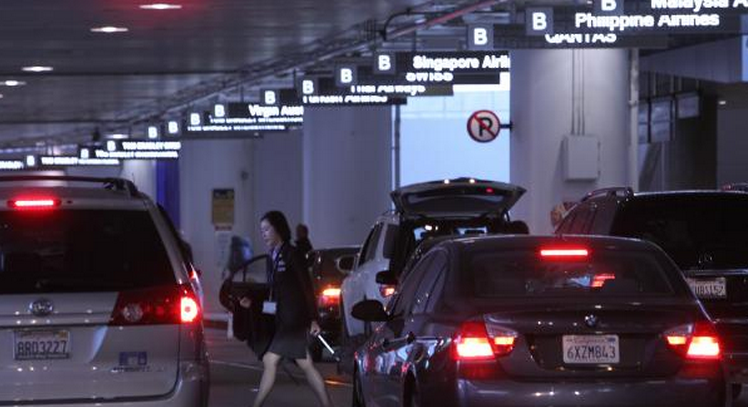
Featured in: Marketplace for Wednesday, February 26, 2014
Article byAlex Schmidt
Wednesday, February 26, 2014 – 13:56
Los Angeles International Airport may be a major hub, but there’s no easy way to get from terminal to terminal. And, if you’re confused, don’t expect much help from the airport’s signs. But LAX is in the thick of a billion dollar makeover — and over $800,000 of that is going to signage.
Laura Valdez was waiting on the curb outside LAX recently. She lives in San Francisco and often flies through Los Angeles.
“I’ve had to navigate that myself. [T]he signage and the instructions for how to get there aren’t very useful, and that has caused me to miss flights,” Valdez says.
New wayfinding could help. Essentially, wayfinding is the signage system that helps you get around a city, a museum, a hospital, or an airport.
“We think in good wayfinding, a visitor can feel confident going in that direction because they’re going to have a nice friendly sign,” says designer Wayne Hunt.
Hunt’s wayfinding design firm just won the project for LAX. A few years back, the company redesigned the signage of the National Mall in Washington D.C. They got rid of hundreds of mismatched and confusing signs. In their place is a system of sleek, granite pylons with simple illustrations that anyone can follow.
“We created 35 simplified pictograms or icons, one for each of the main destinations. Once you recognize the system, you can follow the U.S. Capitol icon around the Mall and get to the U.S. Capitol,” Hunt says.
Now is a good time to be in the signage business. Hundreds of cities and public agencies are investing in new signs. Hunt believes that’s because it’s a relatively cheap way to make an impact.
“You’re not building any buildings, you’re not moving any roads, and yet it gives a sense that there’s lots to do,” he says.
But Wayfinding isn’t confined to the success of physical signs. This is 2014, after all.
A digital wayfinding software company called Meridian has created apps for the American Museum of Natural History and the Bellagio Hotel in Las Vegas. Apps are just one of many digital options that will challenge traditional signage.
“It could be in Google Glass, it could be in digital signage, it could be in augmented reality, or it could be in a map that you’re very familiar with using on the phone,” says Jeff Hardison, a Vice President at Meridian.
Last year, a large Wi-Fi network company bought Meridian for over $20 million dollars. Hardison believes that if traditional sign companies don’t adapt to digital options, they could disappear.
But the real-world sign still has a few things going for it. Imagine having to take out a smartphone to find your way around a hospital emergency department. And there’s the fact that not everyone has a smartphone.
Outside the international terminal at LAX, a traveler who identified himself as Bill sits exhausted on a bench. He couldn’t find his baggage after he got lost coming out of customs. He believes a makeover will help the airport compete on a world stage.
“Have you ever seen Dubai airport?” he asks. “It’s fabulous. The signs are very clear. It makes this look like a small regional airport.”
Bill believes new signs will make a difference, but he also wouldn’t mind a wayfinding app to help him get around LAX.

